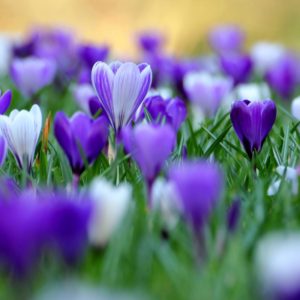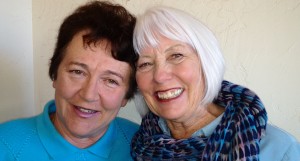February Daily Vibes | Joyful Living Day 1
 Day 1 Law of Attraction Centering Thought
Day 1 Law of Attraction Centering Thought
My happiness resides within me.
No dark fate determines the future. We do. Each day and each moment, we are able to create and re-create our lives and the very quality of human life on our planet. This is the power we wield. ~ Tenzin Gyatso, His Holiness the Dalai Lama & Desmond Tutu, Archbishop Emeritus of Southern Africa
Lasting happiness cannot be found in pursuit of any goal or achievement. It does not reside in fortune or fame. It resides only in the human mind and heart, and it is here that we hope you will find it. ~ Tenzin Gyatso, His Holiness the Dalai Lama & Desmond Tutu, Archbishop Emeritus of Southern Africa
A Love Filled Relationship
In the 2017 “Book of Joy” Douglas Abrams recounts the conversations between his Holiness the Dali Lama and Archbishop Desmond Tutu during their week together in Darussalam to celebrate the Dali Lama’s 80th birthday. The photos alone convey their love for each other and the joy they emanate. How they speak to each other and what they have to say to the world is a delight to read and a source of profound wisdom from these two global spiritual leaders who consider the other his “mischievous spiritual brother.”
Clear Alignment – Misalignment
They talked about the obstacles to joy and the pillars of joy. From the perspective of the concepts of Attraction Based Consciousness they give comprehensive descriptions of what it means to live in clear alignment with your Source Energy and what it means to be in misalignment.
Emotions are our guides telling us the status of the alignment between our physical perspective and that of our Inner Being and Source Energy. Feel good emotions indicate resonances between the two perspectives. Unpleasant emotions mean the vibrations of the Voice in your head are out of sync, are resisting the high, fast, light and clear vibrations of your Inner Being and Source Energy, you are out of clear alignment with the fullness of who you are.
Freedom
We come with free will. We might have such entrenched thought patterns that we feel like we can’t change our thinking, but with practice we can. As Abraham always says, “We are so free we can choose bondage.”
Expansion
Expansion, growth is hard wired into our way of being. Because as vibrational beings we are always thinking, we are always broadcasting a vibrational request, always adding to what is possible, always expanding ourselves and all-that-is.
Joy
Joy is the purpose, the goal of life since joy or any of the pleasant feeling emotions are an indication that we are in clear alignment with the wholeness of who we are. Our physical and nonphysical perspectives are in sync.
Lots More Joy
“We hope this small book will be an invitation to more joy and more happiness,” to quote His Holiness and the Archbishop. Together they explored how we can transform joy from an ephemeral state into an enduring trait, from a fleeting feeling into a lasting way of being.
They offer the reflection of real lives filled with pain and turmoil in the midst of which they have been able to discover a level of peace, of courage, of joy that we can aspire to in our own lives.
Paul Ekman, famed emotions researcher and longtime friend of the Dalai Lama, has written that joy is associated with feelings as varied as:
- Pleasure (of the five senses)
- Amusement (from a chuckle to a belly laugh)
- Contentment (a calmer kind of satisfaction)
- Excitement (in response to novelty or challenge)
- Relief (following upon another emotion, such as fear, anxiety, and even pleasure)
- Wonder (before something astonishing and admirable)
- Ecstasy or bliss (transporting us outside ourselves)
- Exultation (at having accomplished a difficult or daring task)
- Radiant pride (when our children earn a special honor)
- Elevation (from having witnessed an act of kindness, generosity, or compassion)
- Gratitude (the appreciation of a selfless act of which one is the beneficiary)
Buddhist scholar and former scientist, Matthew Ricard has added three other more exalted states of joy.
- Rejoicing (in someone else’s happiness, what Buddhists call Mudita)
- Delight or enchantment (a shinning kind of contentment)
- Spiritual radiance (a serene joy born from deep well-being and benevolence)
Process
Morning Intention Setting
Every conscious action begins with intention. Many Tibetan monks do this each morning as a way of preparing their mind and heart for how they wish to face the day.
The suggestion from “The Book of Joy” is to:
- Sit comfortably, either on a chair with soles of your feet on the ground or cross-legged. Or do this exercise while still lying in bed before getting up in the morning. Rest your hands on your legs or on your belly.
- Close your eyes and take several long breaths through your nose. Feel your stomach rise and fall as you breathe from your diaphragm.
- Now ask yourself: “What is my heart’s desire? What do I wish for myself, for my loved ones, and for the world?” Our deepest desires usually lie beyond our temporary wishes and wants. They are likely to involve living with profound human values that lead to our greatest happiness, calling us back to the place within the fabric of life.
- Then state your intention for the day. For example: “Today may I great everyone with the love that is in my heart.”



